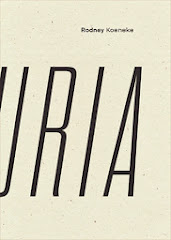
Another biographical circumstance that deepens
Aag’s power is Raj Kapoor’s situation as a Hindu from the Punjab, which in 1947 saw perhaps the worst incidence of ethnic cleansing following the Holocaust as Pakistan and India tried to relocate over 15 million persons who had lived in the same region for centuries in order to accommodate a newly drawn border.
Aag represents the Partition—and, by extension, the modern post-imperial Indian state created that same year—in the person of
Nargis. In the process of auditioning leading actresses for his debut play (woman after woman turned down in a surreal montage of screen test-like close-ups), Kewal storms out of the theater in frustration after delivering a poetic rant about the qualities he needs to realize his vision for a new Indian theater. Hunched on a bench in dramatic chiaroscuro backlight is a mysterious woman looking for a job.
Kewal: “What’s your name?”
(Nargis): “I have no name.”
Kewal: “Where do you come from?”
(Nargis): “Hell. What is Punjab but a hell? Hellfires everywhere. It took my parents, my three brothers, two innocent sisters. To the fires I lost my home, my name. You got anything else to ask?”
Kewal: “Come in.”
Nameless and homeless, Nargis becomes Kewal’s leading lady, a blank slate for his own artistic (and political) imaginings. He begins to call her Nimmi, the name of his lost childhood love. Meanwhile, his sexually ambiguous benefactor finds in ‘Nimmi’ the embodiment of the ideal woman he’s been struggling to capture in his paintings. As Nimmi falls for Kewal—and begins to morph into the missing person Kewal wishes her to be—his jealousy grows, culminating in a fit on opening night in which he slashes his pictures in a rage. Kewal, realizing too late that Nimmi is in love with him instead of his dashing patron, resolves to burn his own face in order to divert her affections. The torch falls, the theater catches fire, and Kewal stumbles out of the inferno with his face ‘partitioned’ by scars.
“Aag” is Hindi for “fire”, and by the end of the film Kapoor has managed to wring every ounce out of its symbolic potential. Pointing as it does to Kewal’s passion for the theater, his desire for his lost love Nimmi, the burning that marked the ethnic fighting between Muslims and Hindus in the Punjab, and the damage to Kewal’s eponymous theater and his person,
Aag welds a highly personal manifesto on cinema’s social purpose to a political allegory of India’s baptism by fire as a modern state.
The film is structured as a flashback on Kewal’s wedding night. The final scene takes us back to the opening, where Kewal is lifting his new bride’s veil, letting her see for the first time his half-scarred face. The woman, horrified at first, hears Kewal’s history in the narration that is also the film, and begins to smile. “Don’t you recognize me?” she says. It’s Nimmi, not Nargis but the ‘primal’ Nimmi, his childhood love: the dream come true, art made life, the circle closed.
aaand ... scene.







